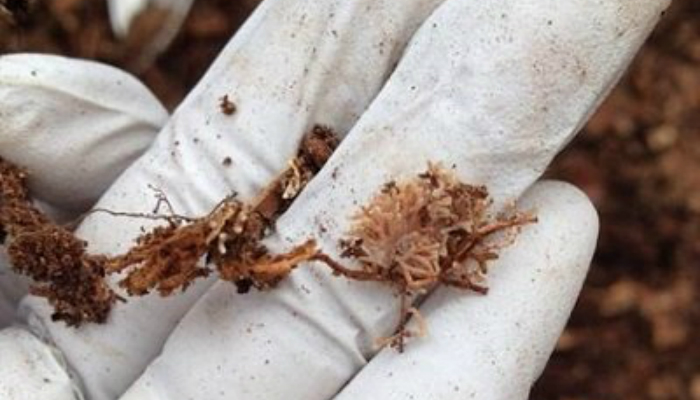Guest post: Belowground fungal interactions with trees help explain non-native plant invasions

One of our readers sent this article in thinking it would be of interest to our readership. I found it was an interesting discussion about something that many may not know anything about – fungi – and shows how elements in nature interact in a wide variety of ways – sometimes completely counter intuitive to what we think should happen. This article is from Science X, which covers topics in physics, earth science, medicine, nanotechnology, electronics, space, biology, chemistry, computer sciences, engineering, mathematics, and other sciences and technologies.
New research published by a team of scientists from the USDA Forest Service and Purdue University suggests that tiny soil fungi that help and are helped by trees may influence a forest’s vulnerability to invasion by non-native plants.
Research published Dec. 1 in the online edition of the journal Ecology Letters suggests that the invasion of nonnative plants is strongly related to what type of mycorrhizal fungi are dominant in forest ecosystems. Mycorrhizal fungi are a type of fungi that help trees feed on minerals in the soil and, in turn, feed off sugars in tree roots.
Lead author Insu Jo of Purdue University and his co-authors, including Grant Domke, a research forester with the Forest Service’s Northern Research Station, explored how dominant forest tree mycorrhizal type affects understory plant invasions. Researchers found that arbuscular mycorrhizal (AM) tree-dominant forests are more vulnerable to nonnative plant invasions than ectomycorrhizal (ECM) tree-dominant forests, likely because nutrients in the soil are consumed and recycled back into the soil more frequently in AM- dominant -forests, creating more nutrition for trees. Understory plant cover for both native and nonnative invasive species was positively associated with the AM fungi, however, invasive species cover increased at a rate 12 times greater than native species as AM-tree-dominance increased.
The study, “Dominant forest tree mycorrhizal type mediates understory plant invasions,” is available at: https://www.nrs.fs.fed.us/pubs/55479
The study is based on data collected by the USDA Forest Service’s Forest Inventory and Analysis (FIA) Program, often referred to as “the Nation’s tree census.” Forest Inventory and Analysis has collected forest data for nearly 80 years; crews began consistently measuring litter and soil attributes on permanent sample plots across all forest land and ownerships as part of the FIA Program in 2001.
“Forest Inventory and Analysis data is helping to address pressing ecological questions throughout the nation and world,” said Tony Ferguson, Director of the Northern Research Station and Forest Products Laboratory. “We make the investment in forest data an even greater asset through partnerships that are resulting in knowledge and tools that are relevant to a broad audience.”
This work helps explain the establishment and spread of invasive plants in forests according to Domke. “Invasive species are a serious threat to forests in the U.S.,” he said. “This research will help land managers better understand the conditions in which invasive plant species exist and which forest types are at risk of understory plant invasion.”
Originally published in PhysOrg


